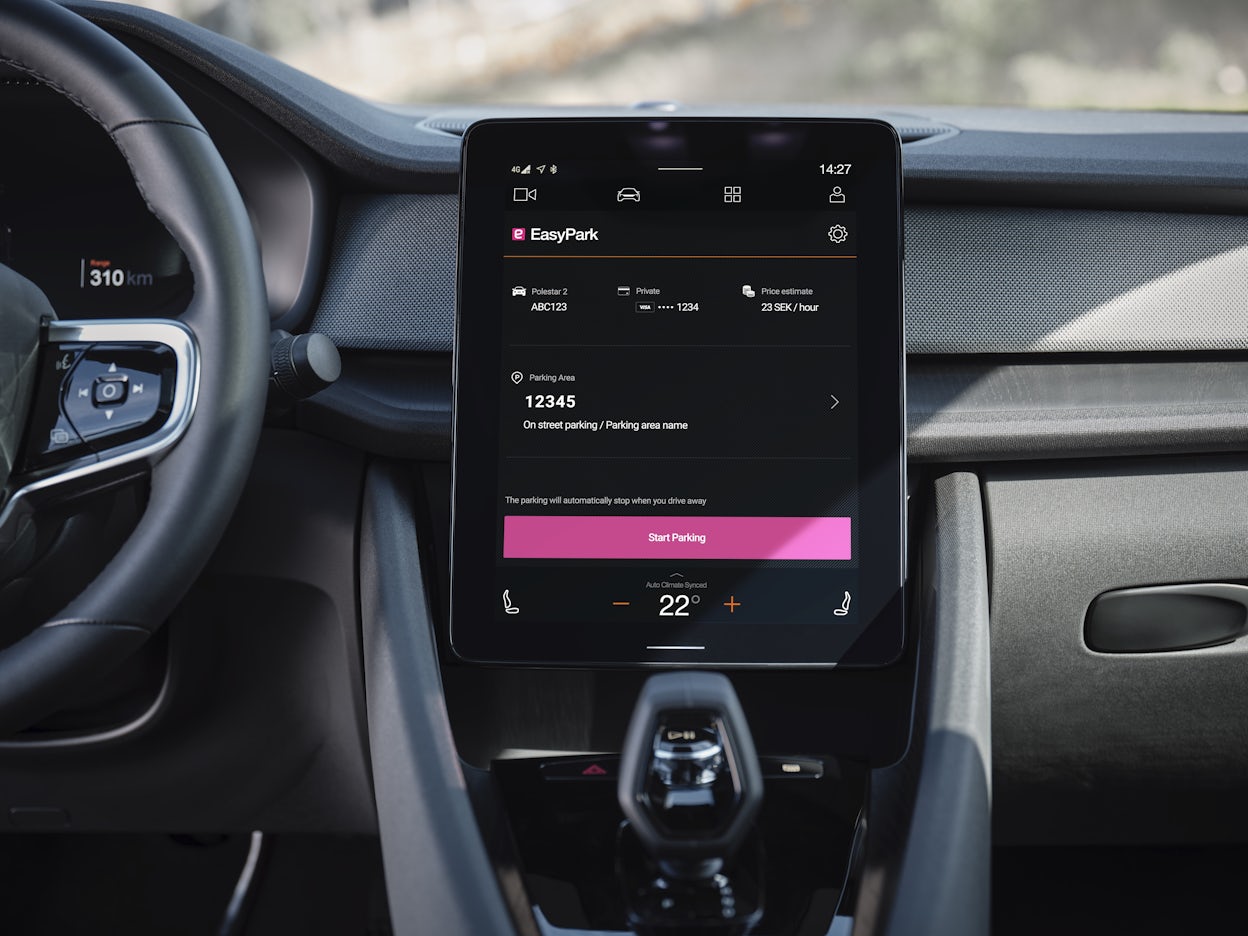The developer perspective: EasyPark
Exploring the great unknown has undeniable appeal. Seeing something familiar while you’re at it makes it that much better. The images sent from the surface of Mars, for example, are all the more compelling because they display vistas that wouldn’t look out of place in the American Southwest. It’s unknown, yet recognisable. Not unlike the infotainment system of Polestar 2.

It’s beneficial to work with a company that embraces software and is willing to work with developers.
From a developer’s point of view, Android Automotive is both comfortingly familiar and excitingly new, making app development for cars less daunting than it might seem at first. “Coming from a mobile development background, it was great experience working with something we know,” says EasyPark Product Manager Alexej Schmidt of the Polestar 2 Android Automotive system. “We could read signals, we could see capabilities and we knew the core elements.”
Additionally, Schmidt credits Polestar’s approach to software as a necessary, and overdue, step in the right direction. “It’s beneficial to work with a company that embraces software and is willing to work with developers,” he states. “Before, automakers were so hardware focused. We’ll see if, and how, other OEMs adopt this.”
That’s not to say it isn’t without challenges, however. Such as testing. “It’s easy to buy a mobile device for testing purposes,” continues Schmidt, one of the team members behind the Polestar 2 EasyPark app, an Android Automotive first. “You can’t do the same with a car because of the price.” Live testing and debugging happened in Gothenburg, with teams from both Polestar and EasyPark testing together. Though the EasyPark team made use of Polestar’s emulator, there is no substitute for real-life testing.
Support from Polestar and Google was always available throughout the process. “Our designer created the first UX based on our twenty years of experience in the industry,” explains Schmidt, “and after feedback from Polestar, we implemented and aligned. It was very collaborative.” This collaboration and communication flourished despite the onset of COVID-19, which struck in earnest right after the building and integration stage of development began, stretching the project past the initial six-to-nine-month timeline to a full year.
Despite the challenges, the project was a success, the benefits clear to all. “Maintenance of the app is so much easier,” claims Schmidt. “You push one update and it’s implemented in all cars simultaneously, as opposed to before, when special updates were performed in the garage via cable.”
The ease of use was also picked up by Polestar 2 owners. “It’s a highly engaged user base,” says Schmidt. “We didn’t launch any specific campaigns, and the users naturally started using the app. They’re very happy, and if they have feedback, they reach out.”
Surveying new territory can be daunting. A recognisable element or two, such as those which can be found in the Polestar 2 infotainment system, makes it that much more fun to explore.








